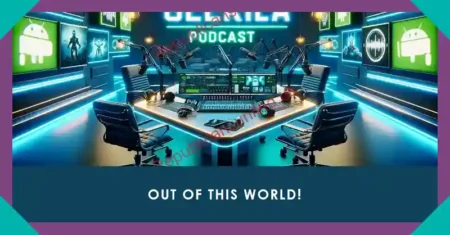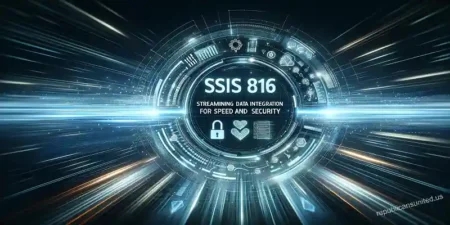
In the wake of President Biden’s ambitious efforts to address the mounting student debt crisis, understanding the intricate landscape of student loans, debt relief, and forgiveness programs becomes more crucial than ever. This comprehensive guide aims to demystify the intricacies surrounding the Biden-Harris administration’s student loan initiatives. Whether you’re a student loan borrower seeking clarity or a curious observer wanting to stay informed, this article is your roadmap to understanding the present and future of student debt in the United States.
Key Takeaways
- President Biden’s student loan relief initiatives represent a historic effort to address the mounting student debt crisis in the United States.
- The Public Service Loan Forgiveness (PSLF) program has undergone significant improvements, making it more accessible and forgiving for individuals working in public service.
- Income-driven repayment plans play a crucial role in alleviating the financial burden on borrowers, and the administration has implemented changes to enhance their effectiveness.
- The comprehensive debt relief plan includes measures such as direct consolidation loans and total debt cancellation, providing targeted relief for diverse borrower needs.
- The Department of Education’s role is central to the success of the administration’s initiatives, overseeing federal student loans and forgiveness programs.
- President Biden’s vision prioritizes individual borrowers, with a focus on improving the overall experience and holding loan servicers accountable.
- As the nation approaches 2024, borrowers should stay informed about the evolving landscape of student loan initiatives and higher education policies.
- Monthly payments and repayment plans are fundamental considerations for borrowers, reflecting the administration’s commitment to creating an affordable student loan system.
- Debt cancellation is a critical component of the administration’s strategy, and borrowers should understand the criteria and eligibility factors.
- The future landscape aims toward a more affordable and accessible higher education system, with initiatives focused on preventing future generations from facing similar challenges.
Student Loan Landscape in the Biden Era
President Biden’s commitment to addressing the student debt crisis has been evident since taking office in 2021. With a focus on providing relief to borrowers, his administration has unveiled a comprehensive plan aimed at easing the financial burden on millions of Americans.
The administration’s plan includes a historic $4.8 billion investment in student loan relief, marking one of the most substantial efforts in recent memory. This initiative is designed to benefit a wide range of borrowers, encompassing both federal direct loans and loans through the Federal Family Education Loan (FFEL) program.
The Department of Education has played a pivotal role in implementing these initiatives, working to ensure that as many borrowers as possible receive the relief they need. The administration’s commitment is reflected in its approval of nearly $4 billion in federal student loan forgiveness, a significant step toward the goal of providing substantial debt relief.
Public Service Loan Forgiveness (PSLF) Unveiled
One of the cornerstones of President Joe Biden student loan strategy is the enhancement of the Public Service Loan Forgiveness (PSLF) program. PSLF has long been a beacon for individuals working in public service, offering the promise of forgiveness for those who dedicate their careers to serving their communities.
Under the Biden administration, improvements to the PSLF program aim to make it more accessible and forgiving. The program forgives the remaining balance on qualifying loans after borrowers make 120 qualifying monthly payments while working full-time for a qualifying employer. Recent rulemaking under the Higher Education Act seeks to address the challenges faced by many borrowers working toward forgiveness, ensuring that more individuals can benefit from this crucial program.
Income-Driven Repayment
For many borrowers, income-driven repayment plans provide a lifeline, offering a solution that aligns with their financial capacity. These plans calculate monthly payments based on a borrower’s income and family size, providing a more manageable approach to repayment.
The Biden administration has taken steps to enhance income-driven repayment plans, recognizing their importance in alleviating the burden on borrowers. With a focus on ensuring that loan payments are affordable, the administration has implemented changes to make these plans more accessible and effective. Borrowers now have the opportunity to cap their monthly payments at a percentage of their discretionary income, providing a crucial safety net for those facing financial challenges.
Debt Relief Plan Breakdown
Central to the administration’s student loan initiatives is the comprehensive debt relief plan, which addresses the diverse needs of borrowers across the country. This plan involves targeted measures to provide relief to as many borrowers as possible, recognizing the varying circumstances individuals face.
The plan includes measures such as direct consolidation loans, aimed at simplifying repayment by combining multiple federal education loans into one loan with a single monthly payment. Additionally, the administration has approved total debt cancellation for certain borrowers, a landmark decision in the pursuit of a fair and equitable student loan system.
Impact on Federal Student Loans
The Department of Education’s role in implementing the administration’s student loan initiatives cannot be overstated. Through the Federal Student Aid office, the department plays a key role in ensuring that borrowers receive the support they need. From managing federal student loans to overseeing forgiveness programs, the department’s efforts are central to the success of the administration’s broader strategy.
Biden’s plan also extends to borrowers with loans through the Federal Family Education Loan (FFEL) program, ensuring that relief reaches a wide spectrum of individuals. This inclusive approach is a testament to the administration’s commitment to providing comprehensive solutions for borrowers across different loan programs.
Biden’s Vision for Borrowers
President biden initiatives are rooted in a vision that places individual borrowers at the forefront. Recognizing the challenges faced by millions of Americans, the administration has taken steps to improve the overall experience for student loan borrowers.
The administration’s commitment to borrowers is reflected in its emphasis on ensuring that loan servicers play a positive role in the repayment process. By holding loan servicers accountable and working to improve the quality of service, the administration aims to create a more borrower-friendly environment.
The Road to 2024
As the United States approaches the year 2024, borrowers are keen to understand what lies ahead in terms of student loan initiatives. The Biden administration’s plans are dynamic, with ongoing efforts to address the evolving needs of borrowers and the higher education landscape.
With a focus on making higher education more accessible, the administration is likely to unveil additional measures aimed at supporting students and graduates. Understanding the trajectory of these initiatives is crucial for borrowers planning their financial futures.
Monthly Payments and the Repayment Plan Puzzle
Monthly payments are a fundamental aspect of any repayment plan, and the Biden administration recognizes their importance in creating a sustainable system. By offering income-driven repayment plans, the administration allows borrowers to align their monthly payments with their financial capacity.
Borrowers should carefully consider the structure of their repayment plans, taking into account factors such as income, family size, and financial goals. The administration’s commitment to providing affordable repayment options reflects a broader effort to create a student loan system that prioritizes the well-being of borrowers.
Understanding Debt Cancellation
Debt cancellation is a critical component of the Biden-Harris administration’s strategy to address the student debt crisis. The administration has approved significant debt cancellation measures, recognizing that this approach is essential to achieving meaningful relief for borrowers.
Navigating the complexities of debt cancellation requires a nuanced understanding of the criteria and eligibility factors. Borrowers should stay informed about the specific conditions under which debt cancellation applies and how it aligns with the broader goals of the administration’s student loan initiatives.
Toward a More Affordable Student Loan System
The Biden administration’s initiatives extend beyond immediate relief, aiming to create a more affordable and accessible higher education system. By launching affordable student loan repayment plans, the administration seeks to address the root causes of the student debt crisis.
These plans are designed to provide borrowers with options that promote financial stability and reduce the long-term impact of student loan debt. By focusing on the affordability of higher education, the administration takes a proactive approach to prevent future generations from facing the same challenges as current borrowers.
Final Words
As the Biden-Harris administration continues to implement and evolve its student loan relief initiatives, staying informed is key for borrowers navigating the complexities of student debt. By understanding the nuances of programs like PSLF, income-driven repayment, and debt cancellation, individuals can make informed decisions to shape their financial futures. The road to a more affordable and equitable student loan system is underway, and borrowers play a crucial role in shaping the trajectory of these transformative initiatives.







